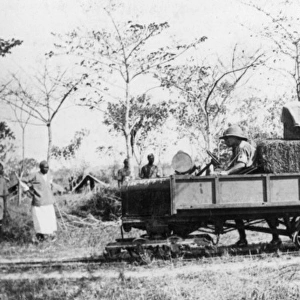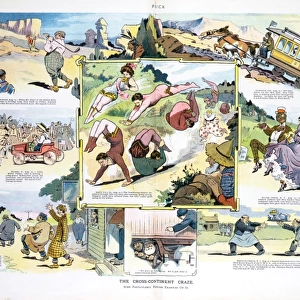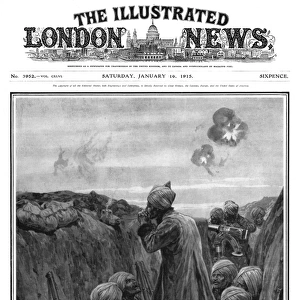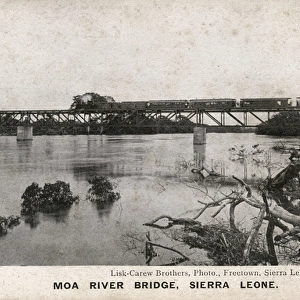Photographic Print : Use of manpower on mini railway, Schaedels Farm, WW1
![]()

Photo Prints from Mary Evans Picture Library
Use of manpower on mini railway, Schaedels Farm, WW1
Use of manpower on the mini railway at Schaedels Farm, a place of relaxation for exhausted soldiers near Lindi, East Africa, during WW1.
1917
Mary Evans Picture Library makes available wonderful images created for people to enjoy over the centuries
Media ID 14394740
© The On Call in Africa Collection / Mary Evans Picture Library
Lindi Manpower Mini Track Schaedel
15"x10" (37.5x25cm) Poster
Step back in time with our exclusive print from The On Call in Africa Collection at Mary Evans Picture Library. This captivating photograph, titled "Use of manpower on mini railway, Schaedels Farm," depicts a scene of respite during the harsh realities of World War 1. Soldiers are seen working together on a miniature railway at Schaedels Farm, a place of relaxation near Lindi, East Africa, in 1917. This evocative image is part of the Media Storehouse range of Photographic Prints, allowing you to bring a piece of history into your home or office. Experience the power of history with this unique and intriguing print.
High-quality poster prints are available in a range of sizes and are printed on 270 gsm semi-glossy silk finish poster paper. An affordable option for decorating any space, they are perfect for fixing straight onto walls. To ensure your poster arrives in good condition, we roll and send them in strong mailing tubes.
Our Photo Prints are in a large range of sizes and are printed on Archival Quality Paper for excellent colour reproduction and longevity. They are ideal for framing (our Framed Prints use these) at a reasonable cost. Alternatives include cheaper Poster Prints and higher quality Fine Art Paper, the choice of which is largely dependant on your budget.
Estimated Image Size (if not cropped) is 37.5cm x 22.7cm (14.8" x 8.9")
Estimated Product Size is 37.5cm x 25cm (14.8" x 9.8")
These are individually made so all sizes are approximate
Artwork printed orientated as per the preview above, with landscape (horizontal) orientation to match the source image.
EDITORS COMMENTS
This evocative photograph captures the use of manpower on the mini railway at Schaedels Farm during World War I. Located near Lindi, in East Africa, Schaedels Farm served as a much-needed respite for exhausted soldiers in 1917. The mini railway was a simple yet effective means of transportation, providing a brief moment of normalcy amidst the chaos of war. The soldiers, dressed in their uniforms and armed with shovels, are seen working together to lay tracks for the mini railway. Their faces are etched with determination and focus, a testament to their resilience and strength. The African laborers, dressed in traditional clothing, work alongside the soldiers, demonstrating the unity and cooperation that was essential during this time. The mini railway was an important aspect of life at Schaedels Farm, which also included a hospital, farm, and recreational facilities. The farm provided soldiers with fresh produce, while the railway allowed them to travel between various areas of the farm and engage in activities such as sports and relaxation. This photograph is a poignant reminder of the human spirit and the ingenuity that emerged during wartime. It also highlights the multicultural nature of the war effort, with soldiers and laborers from diverse backgrounds working together towards a common goal. The use of manpower on the mini railway at Schaedels Farm is a powerful symbol of the camaraderie, perseverance, and resourcefulness that defined the experiences of soldiers during World War I.
MADE IN AUSTRALIA
Safe Shipping with 30 Day Money Back Guarantee
FREE PERSONALISATION*
We are proud to offer a range of customisation features including Personalised Captions, Color Filters and Picture Zoom Tools
FREE COLORIZATION SERVICE
You can choose advanced AI Colorization for this picture at no extra charge!
SECURE PAYMENTS
We happily accept a wide range of payment options so you can pay for the things you need in the way that is most convenient for you
* Options may vary by product and licensing agreement. Zoomed Pictures can be adjusted in the Cart.













